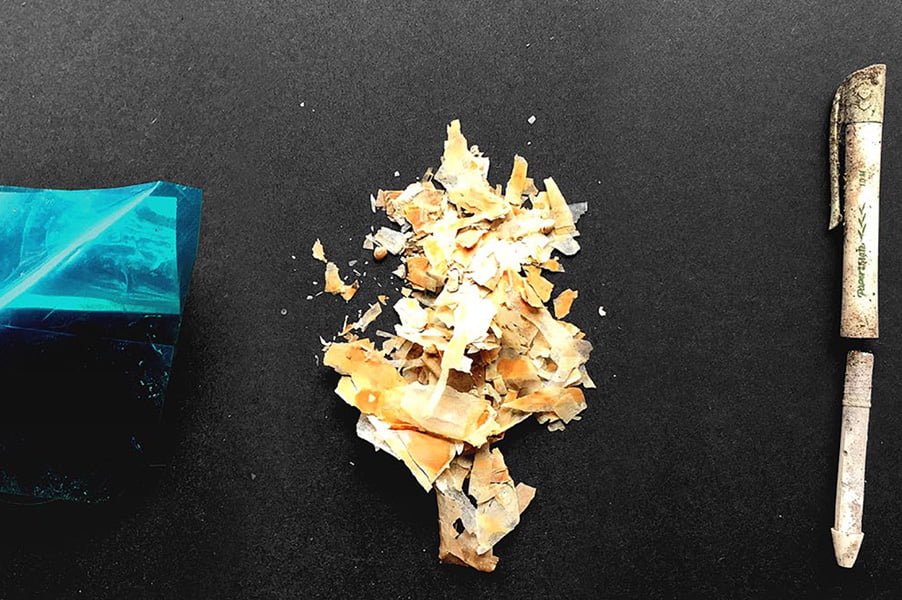We understand that each of our business activities (from lighting our shops, wrapping our deli counter foods, to serving a takeaway offering) creates pollution as a by-product; but it’s what we do to try to impactfully reduce our pollution (as part of our business policies) that is becoming more important.
This last couple of years has seen a heightened nationwide interest in the reduction of plastics here in the UK, with the plastic bag tax finally seeing the use of single use carrier bags diminish with engaged consumer support. This is all good news; but there’s still so much to be done to really slow down the destruction to our planet.
According to the Ellen Macarthur Foundation, “each year, at least 8 million tonnes of plastics leak into the ocean — which is equivalent to dumping the contents of one garbage truck into the ocean every minute. If no action is taken, this is expected to increase to two per minute by 2030 and four per minute by 2050”. If we really absorb the enormity of that staggering figure, how can we fail to be moved to do our part?

Image sourced from: https://www.sundried.com/blogs/news/how-bad-is-the-global-plastic-pollution-problem-and-what-can-we-do-about-it
So; is it as simple as manufacturers and suppliers using biodegradable and compostable packaging? You would think so, right? Well, it’s just not that clear cut, or simple.
These terms both have clear meanings – Biodegradable is defined as “a material that will break down or decompose through microbial action into basic elements found in nature”. In essence, they must be “eaten” by microbes, such as those found in soil, with decomposition occurring within a certain timeframe. Compostable refers to “a material that will break down quickly in a typical composting operation into nutrient-rich, soil-conditioning mixture”. Surely, when a plastic is labelled compostable or biodegradable, it should represent how the end user (that’s you and me) will dispose of, or recycle the product? I’m not sure about you, but I personally don’t have a composter at home (although having looked into this subject, I will probably get one), and even if I did, it would not be able to mimic the high temperatures of an industrial composter; thereby not really be able to compost a plastic product.
We may think that if it says its biodegradable it’s ok, as even if placed in landfill or if it finds it’s way to the ocean, it will break down eventually; however, this is a contradiction in terms. Biodegradable organic materials require air, water, light, or a combination of these elements to enable the microorganisms to do their job. Remove any (or all) of these elements, and biodegradation can be slowed dramatically. A landfill site is essentially volumes of waste piled on top of each other, thereby blocking the light and oxygen to all but the top layers. With a protective liner in place at the base of the landfill (used to prevent toxins leaking into the soil), everything is essentially locked into the site, therefore not enabling nature to do it’s thing. Even easily degradable items, such as banana peels and paper, are known to survive for years in landfills with minimal degradation. Degradation of bio plastics in the Ocean is also difficult, as you can see by the image below from the Marine Litter Report.

Image sourced from: https://www.5gyres.org/publications/
For both your consumers and for you/us as a business, it’s difficult to know what to do. Unclear marketing terms that are supposed to suggest (through the use of colours, logos, and packaging design) that there are recyclable properties to the packaging, cause the public to believe they are making good choices. It’s tricky to unpick the actual truth behind the claims to see what is what, but I’m giving it a go.
Bioplastics are made from a renewable feedstock or biomass (a feedstock is defined as any renewable, biological material that can be used directly as a fuel, or converted to another form of fuel or energy product). An example of this is the use of the leftover pulp from harvesting sugarcane. This feedstock is not what makes the Bioplastic compostable or biodegradable; it’s the molecular structure that does.
Taking PET (Polyethylene terephthalate) as an example, PET is the plastic commonly used for single use drinks bottles; and the bulk of PET is produced from fossil fuel derived plastic. PET can also be made from biomass (which means a renewable, biological fuel converted to another form of energy), and then be labelled Bio-PET. As a consumer, if you see a label Bio-PET or PET, the likelihood is you are going to think the Bio-PET is biodegradable, rather than just recyclable; which it isn’t. Neither are compostable or biodegradable, and both must go into the recycle chain to be broken down and re-invented. Generally, plastic packaging that is considered as compostable is designed to be composted in commercial grade industrial facilities; not at home in a compost bin, as the correct conditions required to break down the polymers are just not achievable in home compost bins.
The answer to this is education and clear labelling, so that all of us know what we need to be doing to ensure we are responsible within our environment to dispose of our plastics and litter accordingly and in the correct way.

Image sourced from: https://www.greenpeace.org.uk/plastic-end-ocean/
If you have a business and you want to make some changes to the way you impact the environment, you can read our top ten ways to reduce your environmental impact here.

